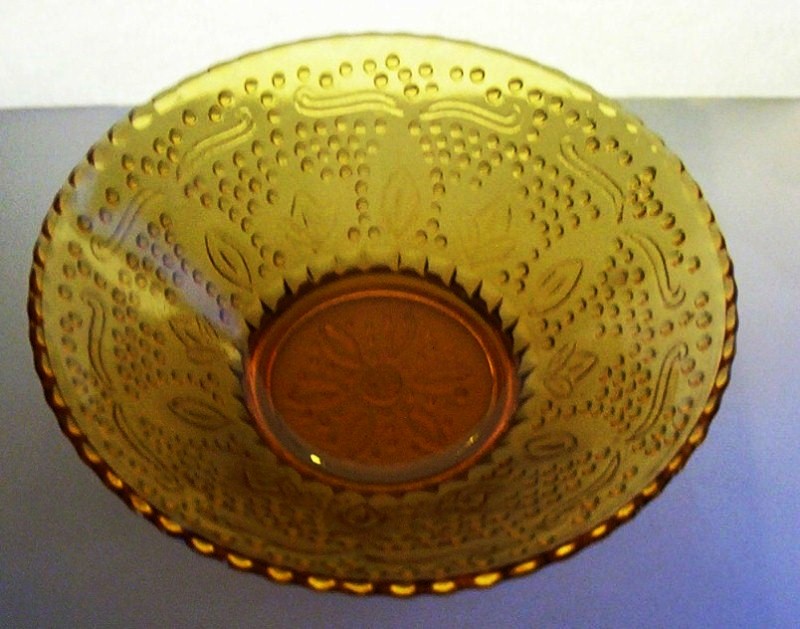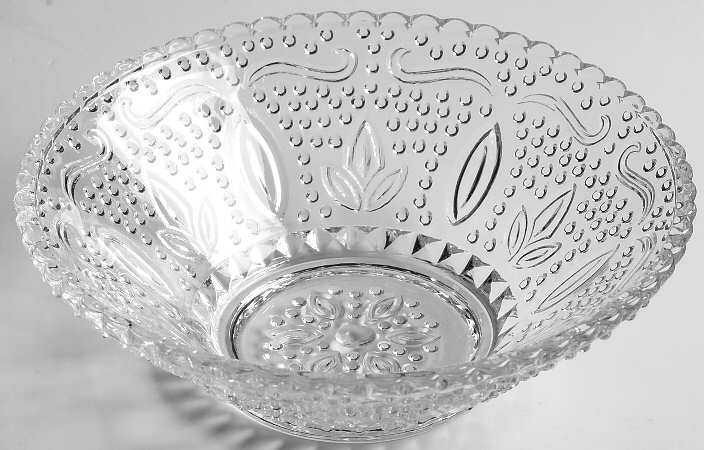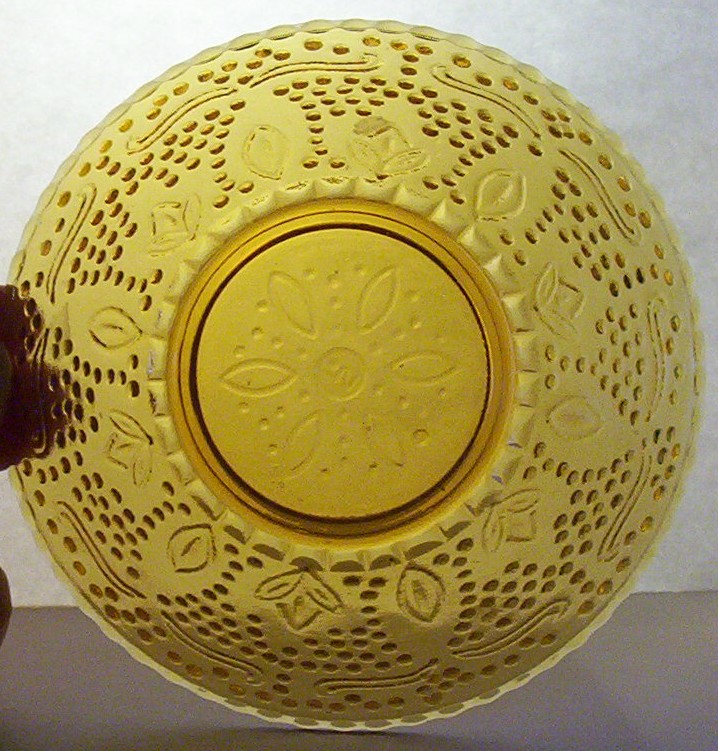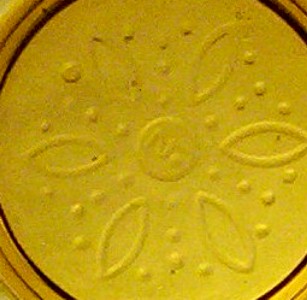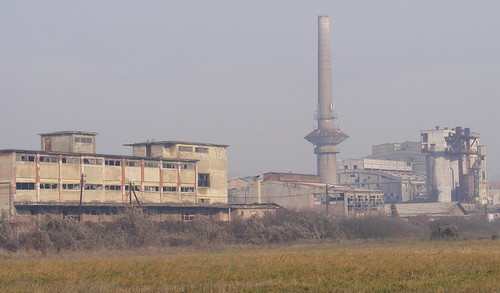SEARCH
If you have a piece of glass and you are looking for an ID, I've been cataloging glass by pinned images. Check under each image and you'll see a folder link; such as, Indiana Glass or Pairpoint Glass, etc. Click on these links to go to the folders I've been creating by Glass Company. This is a work in progress and needs an administrator. Looking for a GLGD volunteer to assist with these pinnings.
These pins are listings and pictures from all around the internet. This is a guide and shouldn't be taken as deadpan proof that you have found your ID. Many blog writers, sellers, etc. copy other people's listing errors. You should always try to verify your ID with the experts before selling something on the net.
These pins are listings and pictures from all around the internet. This is a guide and shouldn't be taken as deadpan proof that you have found your ID. Many blog writers, sellers, etc. copy other people's listing errors. You should always try to verify your ID with the experts before selling something on the net.
3/20/2016
Luxury American Glass Before WWII: What Piece Type is This Stemware Anyway?
Luxury American Glass Before WWII: What Piece Type is This Stemware Anyway?: From left to right: Water Goblet 7 3/4"; Claret 7"; White Wine 6 3/4"; Coupe Champagne 6 3/4"; Cocktail 6 1/4&...
9/26/2015
Early 20th Century Cut and Engraved Fine Stemware
This is a link to a great blog site showing fine examples of early 20th Century cut, engraved and etched glass stemware that was common before World War 2 when patterns were much more ornate than after WW2. The blogger also explains the differences in the type of treatments.
Glass Between the Wars
Glass Between the Wars
7/07/2013
No. 9352 Ship Bookends by U.S. Glass / Tiffin Glass
Here you will find images of an advertisement for the No. 9352 Ship Bookends with the black satin finish by US Glass and a photo of the actual bookend that I inherited. These were produced around circa 1924-1934 and can be found in black or amber satin finish over
glass. Similar bookends can be found in clear glass made by
New Martinsville Glass, circa 1938 but the mold is slightly different.
There's a little story that goes with my pair of Black Ship Bookends. Originally, I never thought of the bookends as being glass. The finish is so thick and I just figured they were heavy like most weighted bookends and must be ceramic. Unfortunately, one day cleaning, I dropped one of them and it chipped on the corner. When I looked at the damage, I was shocked to find that they were made of glass. So that day I learned that if you ever have what you think is a piece of porcelain or ceramic, and it has a thick painted finish or lots of embellishments, think twice; there just might be glass under all that decoration.
When I found out they were glass, I scoured my library for an ID. I found the advertisement in a tiny obscure section of Hazel Marie Weatherman's Depression Glass II book and found that they were made by U. S. Glass. I was so happy to have found all this out.
Many years go by and of course I'm now involved in the Glass Lovers Glass Database project and every month I try to get a book to help with identifications for the database. There are so many books I need to get and yet there is so little money to buy books so I have to be careful what I buy but I felt we really needed a book on Tiffin Glass, so I finally bought it and received it in the mail a few weeks ago. Low and behold, I'm looking through the book and there I see my bookends as being made by U. S. Glass, Tiffin Factory R....
Glass lesson number 2: If a piece of glass is made by U. S. Glass, chances are it was made by one of the sub-companies that formed U.S. Glass also so you may have two company attributions in your research. The United States Glass Company was formed when 18 or more glass companies combined in 1891 to try to survive trying times as a combined unit. Several of those companies didn't survive past 1900 (red=survivors) and the rest failed during the Great Depression leaving Tiffin Factory R as the sole survivor under the official name of U. S. Glass Company.
" Factory A - Adams & Co.
Factory B - Bryce Brothers
Factory C - Challinor, Taylor & Co.
Factory D - George Duncan & Sons Glass
Factory E - Richards & Hartley
Factory F - Ripley Glass
Factory G - Gillinder
Factory H - Hobbs Glass Co.
Factory J - Columbia Glass
Factory K - King Glass
Factory L - O'Hara Glass Co.
Factory M - Bellaire Goblet Co.
Factory N - Nickel Plate Glass
Factory O - Central Glass
Factory P - Doyle & Co.
Factory R - A. J. Beatty & Sons, Tiffin, Ohio; later Tiffin Glass
Factory S - A. J. Beatty & Sons, Steubenville, Ohio
Factory T - Novelty Glass Company
Factory U - Gas City, Indiana
Factory GP - Glassport, Pennsylvania"(1)
They're great bookends with some substantial weight to them. If you know anything more about early 20th Century glass bookends, we love to hear from you.
Reference: (1) http://carnivalglass101.carnivalheaven.com/id118.htm
There's a little story that goes with my pair of Black Ship Bookends. Originally, I never thought of the bookends as being glass. The finish is so thick and I just figured they were heavy like most weighted bookends and must be ceramic. Unfortunately, one day cleaning, I dropped one of them and it chipped on the corner. When I looked at the damage, I was shocked to find that they were made of glass. So that day I learned that if you ever have what you think is a piece of porcelain or ceramic, and it has a thick painted finish or lots of embellishments, think twice; there just might be glass under all that decoration.
When I found out they were glass, I scoured my library for an ID. I found the advertisement in a tiny obscure section of Hazel Marie Weatherman's Depression Glass II book and found that they were made by U. S. Glass. I was so happy to have found all this out.
Glass lesson number 2: If a piece of glass is made by U. S. Glass, chances are it was made by one of the sub-companies that formed U.S. Glass also so you may have two company attributions in your research. The United States Glass Company was formed when 18 or more glass companies combined in 1891 to try to survive trying times as a combined unit. Several of those companies didn't survive past 1900 (red=survivors) and the rest failed during the Great Depression leaving Tiffin Factory R as the sole survivor under the official name of U. S. Glass Company.
" Factory A - Adams & Co.
Factory B - Bryce Brothers
Factory C - Challinor, Taylor & Co.
Factory D - George Duncan & Sons Glass
Factory E - Richards & Hartley
Factory F - Ripley Glass
Factory G - Gillinder
Factory H - Hobbs Glass Co.
Factory J - Columbia Glass
Factory K - King Glass
Factory L - O'Hara Glass Co.
Factory M - Bellaire Goblet Co.
Factory N - Nickel Plate Glass
Factory O - Central Glass
Factory P - Doyle & Co.
Factory R - A. J. Beatty & Sons, Tiffin, Ohio; later Tiffin Glass
Factory S - A. J. Beatty & Sons, Steubenville, Ohio
Factory T - Novelty Glass Company
Factory U - Gas City, Indiana
Factory GP - Glassport, Pennsylvania"(1)
They're great bookends with some substantial weight to them. If you know anything more about early 20th Century glass bookends, we love to hear from you.
Reference: (1) http://carnivalglass101.carnivalheaven.com/id118.htm
7/02/2013
Old glass for old wine by Barrymore Laurence Scherer
August 26, 2009 | Raising a
glass of wine in a toast is among the oldest of dining traditions, and
antique wineglasses are among the most appealing objects upon which to
build a glass collection. One of the first things you discover, when
investigating this field, is that antique wineglasses were often much
smaller than the over sized goblets we have become accustomed to.
Paintings and illustrations of drinking scenes right through the
mid-nineteenth century attest to this. For one thing, servants were
supposed to keep a sharp eye out for the guest who needed a refill, a
frequent occurrence during the course of an eighteenth-century meal.
Furthermore, when toasting one another gentlemen were often expected to
drain th eir
glasses, which would have been a far greater challenge with today's
capacious vessels. According to the venerable English glass historian
Sydney Lewis, whose 1916 volume Old Glass and How to Collect It is
still worth reading, at the beginning of the eighteenth century "the
use of different glasses for different kinds of wine had not yet
arisen....A bowl of water was placed on the table in which the drinkers
rinsed their glasses when a new vintage made its appearance."
eir
glasses, which would have been a far greater challenge with today's
capacious vessels. According to the venerable English glass historian
Sydney Lewis, whose 1916 volume Old Glass and How to Collect It is
still worth reading, at the beginning of the eighteenth century "the
use of different glasses for different kinds of wine had not yet
arisen....A bowl of water was placed on the table in which the drinkers
rinsed their glasses when a new vintage made its appearance."
The beautiful early eighteenth-century German wineglass illustrated here is an elegant survivor of those convivial days. Standing a diminutive 5 ¾ inches high, its funnel-shaped bowl---characteristic of the time-is mold-blown with a series of graceful, slightly concave panels, and further enhanced with a delicate wheel-engraved pattern of arches, balls, and swags.
Given the fragile nature of glass, single wineglasses have usually survived in greater abundance than sets. The graceful tulip-shaped example in the second picture is happily one of a set of six Dutch wineglasses from about 1770. Here the simplicity and clarity of the bowl and sloping foot are set off by the stem, with its knop at the middle and its internal opaque white twist pattern. As is expected in any set of handblown glasses, each glass varies slightly in height, these from 6 ½ to 6 3⁄8 inches, and displays minute variations in texture and thickness, all of which contribute to the pleasure of early glasswares. They are priced at $3,750 for the set and are "in excellent condition," according to Mark Allen.
Tips• “Because the beauty of glass is inherent in its clarity, protecting your collection from dust is a primary concern,” says Florian Knothe, curator of European glass at the Corning Museum of Glass, in Corning, New York. He also observes that, “excessive humidity can cause ‘glass disease,’ which looks
like surface frosting. Although it can be washed off the surface to a
degree, glass disease actually affects the body of the metal—especially
in seventeenth-century and earlier glass. And it cannot be reversed. A
humidity level of 42 or 43 percent, which we maintain at Corning, is
ideal.”
looks
like surface frosting. Although it can be washed off the surface to a
degree, glass disease actually affects the body of the metal—especially
in seventeenth-century and earlier glass. And it cannot be reversed. A
humidity level of 42 or 43 percent, which we maintain at Corning, is
ideal.”
• Antique glass should be washed by hand in lukewarm water with mild soap, and dried with a lint-free cloth.
• Museums are the best places to see excellent examples of glass. Apart from the Corning Museum, which has extensive exhibition galleries including glass from antiquity to the present, most major art museums have important glass collections.
• Christie’s, Sotheby’s, Bonham’s, Skinner, and other major and regional auction houses hold regular glass sales. Their pre-sale shows offer the opportunity to hold and examine a wide variety of pieces and give you the chance to ask questions of specialists in the field. Needless to say, dealers specializing in the field are always happy to cultivate new collectors, and to suggest good and reasonably priced pieces for those starting out.
Images from above: Wineglass, German, c. 1720. Blown, pattern-molded, engraved glass with a red twist baluster stem; height 5 ¾ inches. Photographs by Samantha Allen by courtesy of Mark and Marjorie Allen Antiques, Manchester, New Hampshire. Wineglass (one of a set of six), Dutch, c. 1770. Handblown and etched glass with a white twist stem; height 6 3⁄8 inches.
You can see this entire article and it's references at: The Magazine Antiques.
We have a member with a very old stem with German inscription as seen below with a centralized air twist latticino knop and copiously engraved.
The inscription reads something like this: und dazu ein liebt ein schönes weib. We're not exactly sure what the inscription says and would love to hear from you if you know. Where were these made? Are they Dutch, German, Italian?
 eir
glasses, which would have been a far greater challenge with today's
capacious vessels. According to the venerable English glass historian
Sydney Lewis, whose 1916 volume Old Glass and How to Collect It is
still worth reading, at the beginning of the eighteenth century "the
use of different glasses for different kinds of wine had not yet
arisen....A bowl of water was placed on the table in which the drinkers
rinsed their glasses when a new vintage made its appearance."
eir
glasses, which would have been a far greater challenge with today's
capacious vessels. According to the venerable English glass historian
Sydney Lewis, whose 1916 volume Old Glass and How to Collect It is
still worth reading, at the beginning of the eighteenth century "the
use of different glasses for different kinds of wine had not yet
arisen....A bowl of water was placed on the table in which the drinkers
rinsed their glasses when a new vintage made its appearance." The beautiful early eighteenth-century German wineglass illustrated here is an elegant survivor of those convivial days. Standing a diminutive 5 ¾ inches high, its funnel-shaped bowl---characteristic of the time-is mold-blown with a series of graceful, slightly concave panels, and further enhanced with a delicate wheel-engraved pattern of arches, balls, and swags.
Given the fragile nature of glass, single wineglasses have usually survived in greater abundance than sets. The graceful tulip-shaped example in the second picture is happily one of a set of six Dutch wineglasses from about 1770. Here the simplicity and clarity of the bowl and sloping foot are set off by the stem, with its knop at the middle and its internal opaque white twist pattern. As is expected in any set of handblown glasses, each glass varies slightly in height, these from 6 ½ to 6 3⁄8 inches, and displays minute variations in texture and thickness, all of which contribute to the pleasure of early glasswares. They are priced at $3,750 for the set and are "in excellent condition," according to Mark Allen.
Tips• “Because the beauty of glass is inherent in its clarity, protecting your collection from dust is a primary concern,” says Florian Knothe, curator of European glass at the Corning Museum of Glass, in Corning, New York. He also observes that, “excessive humidity can cause ‘glass disease,’ which
 looks
like surface frosting. Although it can be washed off the surface to a
degree, glass disease actually affects the body of the metal—especially
in seventeenth-century and earlier glass. And it cannot be reversed. A
humidity level of 42 or 43 percent, which we maintain at Corning, is
ideal.”
looks
like surface frosting. Although it can be washed off the surface to a
degree, glass disease actually affects the body of the metal—especially
in seventeenth-century and earlier glass. And it cannot be reversed. A
humidity level of 42 or 43 percent, which we maintain at Corning, is
ideal.”• Antique glass should be washed by hand in lukewarm water with mild soap, and dried with a lint-free cloth.
• Museums are the best places to see excellent examples of glass. Apart from the Corning Museum, which has extensive exhibition galleries including glass from antiquity to the present, most major art museums have important glass collections.
• Christie’s, Sotheby’s, Bonham’s, Skinner, and other major and regional auction houses hold regular glass sales. Their pre-sale shows offer the opportunity to hold and examine a wide variety of pieces and give you the chance to ask questions of specialists in the field. Needless to say, dealers specializing in the field are always happy to cultivate new collectors, and to suggest good and reasonably priced pieces for those starting out.
Images from above: Wineglass, German, c. 1720. Blown, pattern-molded, engraved glass with a red twist baluster stem; height 5 ¾ inches. Photographs by Samantha Allen by courtesy of Mark and Marjorie Allen Antiques, Manchester, New Hampshire. Wineglass (one of a set of six), Dutch, c. 1770. Handblown and etched glass with a white twist stem; height 6 3⁄8 inches.
You can see this entire article and it's references at: The Magazine Antiques.
We have a member with a very old stem with German inscription as seen below with a centralized air twist latticino knop and copiously engraved.
The inscription reads something like this: und dazu ein liebt ein schönes weib. We're not exactly sure what the inscription says and would love to hear from you if you know. Where were these made? Are they Dutch, German, Italian?
6/23/2013
Meriden author writes about ‘little company that could’ - MyRecordJournal.com: Meriden News - Myrecordjournal.com
Meriden author writes about ‘little company that could’ - MyRecordJournal.com: Meriden News - Myrecordjournal.com
“The Meriden Flint Glass Company: An Abundance of Glass,” by resident Diane Tobin, chronicles the history of the short-lived but influential company that called the city home from the 1870s through the 1880s. Later, the factory building became home to the more widely known Napier jewelry company.
“They were the little company that could. They took on the giants of the time,” Tobin said Monday at her Gale Avenue home, where she has a small collection of Flint Glass products.
Though Meriden is known for its silver industry, local silver companies responding to trends in the market added glassware to their catalogs, Tobin said. Consumers would have had to purchase glass from places such as the New England Co. of Cambridge, Mass., or from Europe, Tobin said, which could be costly.
Horace C. Wilcox, former Meriden mayor and president of the Meriden Britannia Co., was on a trip to Europe in the early 1870s and toured some glass factories. He decided that glass could also be made in Meriden.
In 1876, the Britannia Co. approved $50,000 in stock to create the Meriden Flint Glass Company, Tobin said. As was common with new companies, the glass factory lured workers away from existing ones, such as New England Glass, Tobin said, which is how Cambridge Street got its name.
“They had some of the best artisans in the world working there,” she said.
The company’s artisans lived on Artizan Street.
“George E. Hatch and Joseph Bourne had been connected with the New England Glass Works and were skilled artisans who here directed an enterprise which produced some of the finest ornamental glass ... in the country. The company erected large and well appointed glass works in the northern part of the city and many skilled native and foreign workmen were employed,” reads an excerpt from the 1900 book “History of New Haven County, Volume 1,” edited by John L. Rockey.
Company officials kept a detailed journal of the trials and tribulations of the company, Tobin said. She spent a lot of time reading through the volumes at the Meriden Historical Society."................(see article to continue)
6/22/2013
Who Made Me? What am I? Original or Fake Glass?
Several years ago, I stopped at a garage sale and saw this little dish
crying out take me home. It was thrown into what looked like a
trash heap pile. First thing I loved about this dish was the
pattern. I really love stippled glass and I thought that perhaps
somebody had mislaid this little darling. It appeared to have a
Northwood mark and since it was colored, it was possibly depression
glass. At this time, I knew very little about depression glass
and I'm still really learning it.
See these three images below on the left. This is a the little darling I've been talking about; a small amber dessert bowl that looks like the Federal Glass Heritage pattern made during the post depression era. Pic 3 shows its mark which is very similar to Northwood's hallmark.
So when I saw this piece, I thought, that's depression glass; and then the mark and I thought--Northwood; so, I said to myself, well okay then. I moved on over to the little table with cash box and owner at desk and asked, "How much?" She said 10 cents. I said, "Okay". I was elated that I had just purchased a piece of depression glass for 10 cents. he he he. I was now an the mad search as to what I actually bought. What a surprise to find I bought an anomoly.
Click images for larger view
I've been calling this piece a Fake but in reality, is it an original design by an unknown company since there are some striking differences between this Federal Heritage look-a-like and yet many of the motifs were copied? I did find out that this dish and many other forms like it were distributed by McCrory Stores. After I found this out, it did spur a memory in me of all those individual dishes they use to sell for one dollar by the piece. But I've been unable to obtain any information about where McCrory bought their glassware. I'm assumming that they were imports but you know what they say about assumptions..
Below are definitions used in glass collecting that are useful.
Original, Fake, Reissue or Reproduction What am I?
Original: An original is just that an original design produced by the first company to produce a particular design on a piece of glassware.
Reissue: When the original company with the original design stops production of a particular line of glassware or design and then many or a few years later, starts that line or design all over again.
Reproduction: Glassware produced by a new company using the same moulds purchased from the original company.
Fake: A piece of glassware with a design similar to or almost exacting the original design meant to deceive either with or without markings similar to the original markings created by a company mainly unknown.
I'd love to hear from you and see your images if you have a piece McCrory glassware (esp like this one) and if you have knowledge of how McCrory's bought their glassware. Perhaps you are a former McCrory employee with a little knowledge you could share or a collector that just happened to solve this puzzle.
See these three images below on the left. This is a the little darling I've been talking about; a small amber dessert bowl that looks like the Federal Glass Heritage pattern made during the post depression era. Pic 3 shows its mark which is very similar to Northwood's hallmark.
So when I saw this piece, I thought, that's depression glass; and then the mark and I thought--Northwood; so, I said to myself, well okay then. I moved on over to the little table with cash box and owner at desk and asked, "How much?" She said 10 cents. I said, "Okay". I was elated that I had just purchased a piece of depression glass for 10 cents. he he he. I was now an the mad search as to what I actually bought. What a surprise to find I bought an anomoly.
Click images for larger view
I've been calling this piece a Fake but in reality, is it an original design by an unknown company since there are some striking differences between this Federal Heritage look-a-like and yet many of the motifs were copied? I did find out that this dish and many other forms like it were distributed by McCrory Stores. After I found this out, it did spur a memory in me of all those individual dishes they use to sell for one dollar by the piece. But I've been unable to obtain any information about where McCrory bought their glassware. I'm assumming that they were imports but you know what they say about assumptions..
Below are definitions used in glass collecting that are useful.
Original, Fake, Reissue or Reproduction What am I?
Original: An original is just that an original design produced by the first company to produce a particular design on a piece of glassware.
Reissue: When the original company with the original design stops production of a particular line of glassware or design and then many or a few years later, starts that line or design all over again.
Reproduction: Glassware produced by a new company using the same moulds purchased from the original company.
Fake: A piece of glassware with a design similar to or almost exacting the original design meant to deceive either with or without markings similar to the original markings created by a company mainly unknown.
I'd love to hear from you and see your images if you have a piece McCrory glassware (esp like this one) and if you have knowledge of how McCrory's bought their glassware. Perhaps you are a former McCrory employee with a little knowledge you could share or a collector that just happened to solve this puzzle.
6/21/2013
Beaumont Glass Columbia Pattern circa 1893
COLUMBIA by Beaumont
AKA: Beaumont #100
-
Renamed for the Columbian Exposition of 1893.
COLORS: Clear c Ruby
Stained g Vaseline g
(not all pieces
may have been made in all colors)
PIECES:
Extensive in number. Pieces may
have been “completed” and/or marketed by other companies, although the glass
and pattern are made by Beaumont.
Originally purposed for souvenir ware, the upper portions of pieces like
the sugar, creamer, tumblers, etc. had smooth, blank areas for custom marks,
etc. Pickle jars were made with rims but
no lids for sale to other companies.
Silver plate & other metal work companies would create their own
lines by buying combining the glass inserts with their own frames and lids. Partial listing follows.
Pickle
Castor
Tobacco
Humidifier
Vases
~ flared and cupped
Tableware
service including:
« Berry Set
« Fruit Bowls ~ 9” & 10”
on standards
« Bread Plate ~ 10”
« Plate ~ 8”
« Tumblers (2 separate
designs)
« Salt & Pepper* (square
shaped)
« Salt & Pepper*(round
with bulbous bottoms)
« *Undertray available ~ also
sold as a Pin Tray and Underplate
« Cruet
« Condiment Set: S&P Shakers and Cruet with Undertray
« Jelly Compote
« Syrup Can with pewter lid
« Relish Tray ~ rounded ends ~
10”
« Relish Tray ~ squared ends ~
11”
« Toothpick Holder
« Water Set
Information and photos provided by our member Dave
Peterson. See post #618 – Glass Lovers
Glass Database Yahoo Group, February 16, 2008 @10:33 am – for additional
information and link to photo of pickle castor and original catalog insert.
See our Gallery for additional images.
5/31/2011
Imitation Cut Glass, a hot future collectible
The appeal of 'good' Imitation Cut Glass is only going to become
more desirable as the years go by since the genuine article is going to
be so out-of-reach dollarwise for the average collector that it will
just drive the prices of the good imitation cut glass up.
If you love the diamond cut sparkling appeal of a cut glass table but like most of us, have a poor man's pocketbook, don't discount the beauty of 'good' imitation cut glass. In addition, you will have also started a collection that will only increase in value as time goes on.
A good piece of McKee Prescut can range from $15 to $24 on the auction and antique sites and if you're fortunate, you can grab a piece up for under $10 plus shipping. Be sure to always buy mint unless it's a piece that is rare or hard-to-find.
I predict that in 25 years, these pieces should at least double, if not, triple in price as demand increases and supply decreases. McKee, as well as, other companies manufactured imitation cut glass; such as, Imperial Glass' Nucut line, during the latter part of the 19th Century and the 1st part of the 20th Century. Some companies and their line names:
Imperial Glass Company, NuCut and ArtCut
U. S. Glass Company, ArtCut
Westmoreland Glass Company - DeepCut
Cambridge Glass Company, MearCut
McKee Glass Company, PresCut
Hiesey, Plunger Cut
As time and volunteers permit, Glass Lovers Glass Database, will be documenting these lines in a lot more detail but for now we have assembled some information which can be found at our Gallery. You can find the info at McKee Gallery Page or visit GlassLoversGlassDatabaseMainPg.
Some examples:
If you love the diamond cut sparkling appeal of a cut glass table but like most of us, have a poor man's pocketbook, don't discount the beauty of 'good' imitation cut glass. In addition, you will have also started a collection that will only increase in value as time goes on.
A good piece of McKee Prescut can range from $15 to $24 on the auction and antique sites and if you're fortunate, you can grab a piece up for under $10 plus shipping. Be sure to always buy mint unless it's a piece that is rare or hard-to-find.
I predict that in 25 years, these pieces should at least double, if not, triple in price as demand increases and supply decreases. McKee, as well as, other companies manufactured imitation cut glass; such as, Imperial Glass' Nucut line, during the latter part of the 19th Century and the 1st part of the 20th Century. Some companies and their line names:
Imperial Glass Company, NuCut and ArtCut
U. S. Glass Company, ArtCut
Westmoreland Glass Company - DeepCut
Cambridge Glass Company, MearCut
McKee Glass Company, PresCut
Hiesey, Plunger Cut
As time and volunteers permit, Glass Lovers Glass Database, will be documenting these lines in a lot more detail but for now we have assembled some information which can be found at our Gallery. You can find the info at McKee Gallery Page or visit GlassLoversGlassDatabaseMainPg.
Some examples:
 |
 |
| McKee Glentec | McKee Sextec |
 |
 |
| McKee Aztec | McKee Bontec |
 |
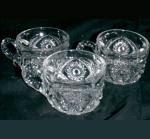 |
| McKee Fentec | McKee Martec |
 |
 |
| McKee Nortec | McKee Quintec |
 |
|
| McKee Valtec |
5/30/2011
Eamon Glass, Dublin, Ireland glass hallmark
This mark was so hard to identify. It was found on a green balled stem (below) with a cut shamrock motif. It turns out that QVC sold Eamon Glass items. This piece may have been one of them. We are still trying to determine how this mark is suppose to be orientated. and what the scribbled letters or script actually is within the hallmark. Also looking for a pattern name.
Glass Lovers Glass Database Gallery is Now Open
The Glass Lovers Glass Database Gallery is now open for public viewing. The gallery comprises a glass pictionary that is organized by glassware company, glassware patterns and then glassware pieces in that pattern. So if you're trying to identify a piece of vintage glassware, take a look around. We hope you enjoy our gallery.
9/18/2010
Polish Glass Mark
The following mark has been very elusive in finding it's owner but alas, I have found the manufacturer.
History of Violetta Crystal Glass Works
Sadly, as of July 2008, "the shareholders of the Violetta Crystal Glass Works of Stronie Śląskie have decided to wind down the company, unable to cope with growing gas and electricity prices, upward pressures on wages, and the strong złoty. 460 persons now employed by Violetta will be made redundant. The plant makes an assortment of products from blown, coated, painted, and hand-engraved glass."(1)
(1) Sources: Parkiet, 18-07-2008 as stated: Eurofound Factsheet
 | |||||||||
| Violetta Crystal Glass Works |
Sadly, as of July 2008, "the shareholders of the Violetta Crystal Glass Works of Stronie Śląskie have decided to wind down the company, unable to cope with growing gas and electricity prices, upward pressures on wages, and the strong złoty. 460 persons now employed by Violetta will be made redundant. The plant makes an assortment of products from blown, coated, painted, and hand-engraved glass."(1)
(1) Sources: Parkiet, 18-07-2008 as stated: Eurofound Factsheet
9/17/2010
Glass from The Former Yugoslavia
 | ||||
| KRISTAL Zajecar Yugoslavia Mark or Hallmark, circa 1970's |
Today: Crystal factory "Kristal", produces and finishes crystal for wide consumption and catering. In bankruptcy procedure the larger part of the property of the company was sold to the company "Eurokristal" from Belgrade, which for production process engages workers of "Kristal".
9/11/2010
Subscribe to:
Posts (Atom)







